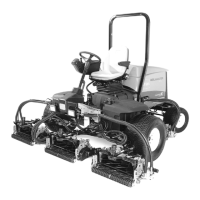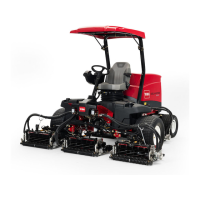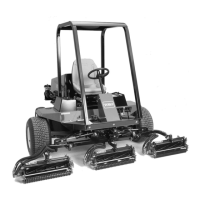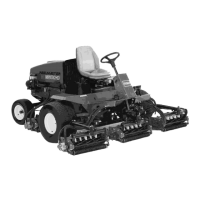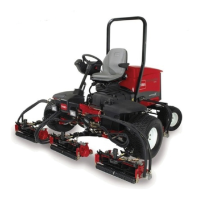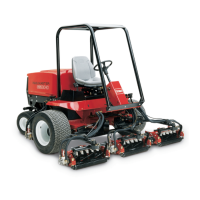Factor Possible Problem/Correction
7. Bedknife to reel contact. Check bedknife to reel contact d
aily and adjust as nec-
essary. Bedknife must have light contact all across
reel. No contact will cause cutting edges to become
dull. Excessive contact accelerates wear; quality of cut
may be adversely affected.
Slightly dull cutt
ing edges may be corrected by back-
lapping. Excessively dull cutting edges must be cor-
rected by grinding the reel and bedknife.
8. Front roller adjustment. Check and adjust as necessary to avoid mismatch be-
tween cutt
ing units.
9. Height of cut. All cutting units set a
t same height of cut. Set with rear
roller – must be equal at
both ends of roller. Bench set
height of cut and actual (effective) height of cut are dif-
ferent. Effective height of cut depends on cutting unit
down pressure adjustment and turf conditions.
10. Rear roller scraper adjustment. Set scraper to 1/32 in. clearance from roll
er.
11. Stability o
f bedbar. Make sure bed bar pivot bolts are securely seated
(maximum 40 ft-lb.)
Make sure opposing bedknife adjustment screws are
tight. To prevent distortion of adjustment screw mount-
ing plate and to prevent damage to bedbar, do not
over-tighten the screws.
12. Number of reel blades. Select cutting unit model
with correct number of blades
for desired height of cut and reel speed.
13. Cutting unit alignment and carrier frame Check lift arms and carrier frames for binding, bushing
ground following. wear or damage. Repair if necessary.
14. Roller condition All rollers must rotate freely. Grease when needed or
repair bearings if necessary.
Make sure roller brackets are in alignment to prevent
excessive bearing wear.
Troubleshooting P
age 8 - 6 Reelmaster
®
223-D/5100-D/5300-D

